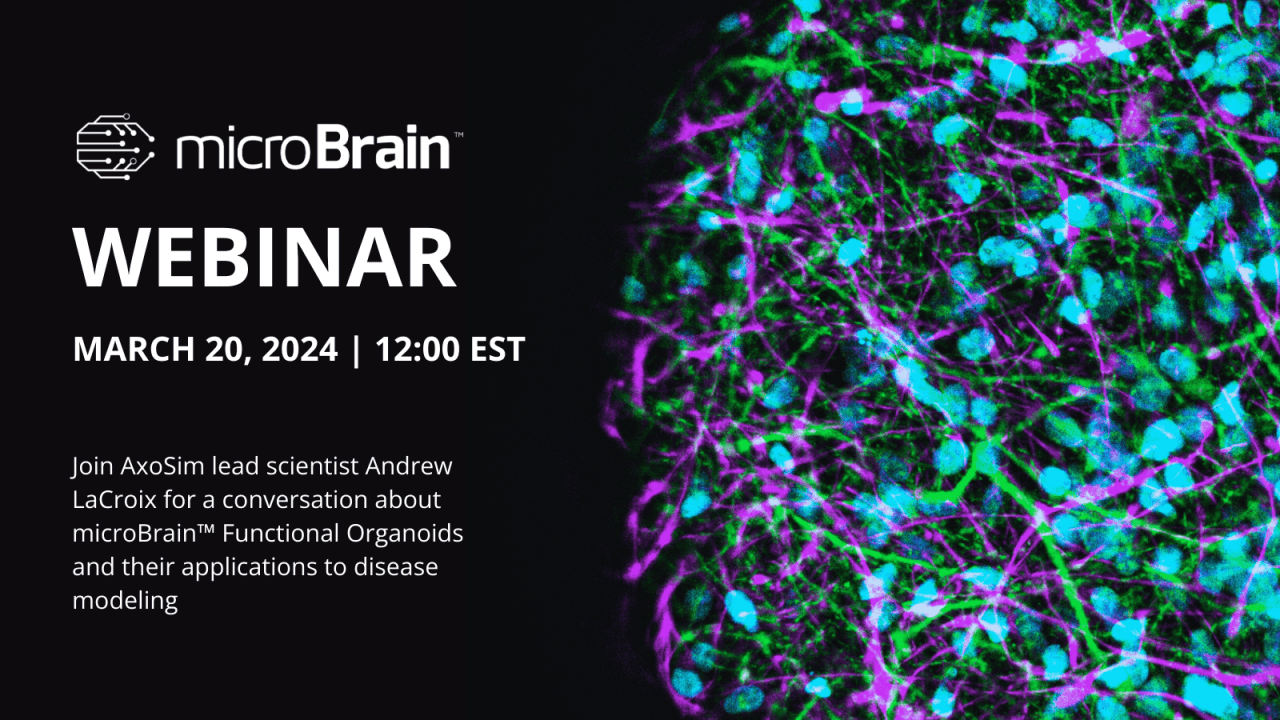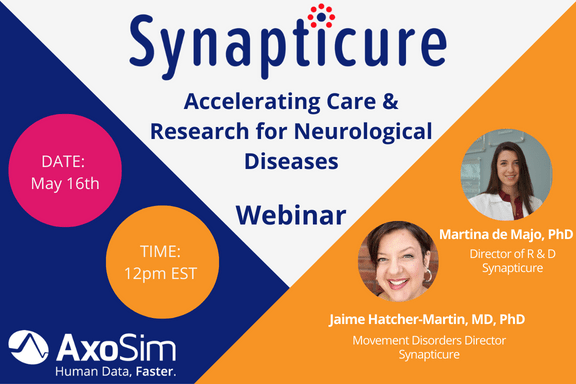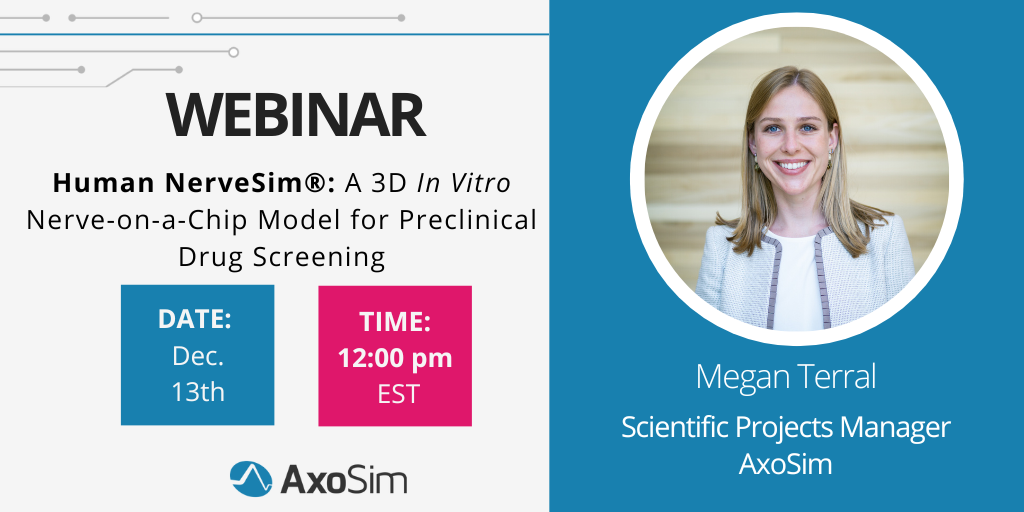microBrain™ Deep Dive | Highlighting Disease Modeling
Speakers: AxoSim Lead Scientist of Assay Development and Screening Andrew LaCroix, PhD | AxoSim Director of Corporate and Business Development Amit Johal
Join AxoSim lead scientist Andrew LaCroix and learn about microBrain™ Functional Organoids and their applications to disease modeling. This session will focus on modeling Rett Syndrome, a progressive neurodevelopmental disorder caused by mutations in the MECP2 gene. We’ll walk through the disease model development process from iPSC expansion and organoid generation to high-throughput screening. Learn how combining patient-derived neural organoids with functional phenotypic screening can be used to interrogate target-specific disease biology, formulate therapeutic hypotheses, and drive pre-clinical drug discovery efforts.
View Webinar


